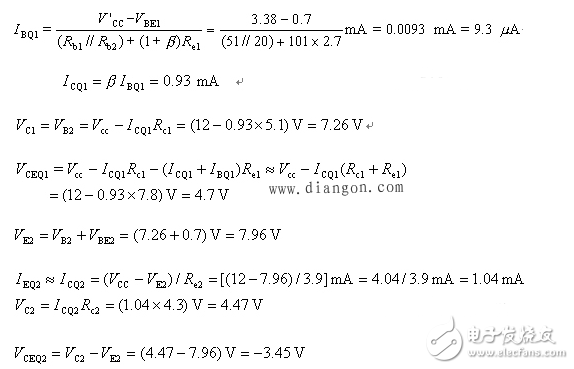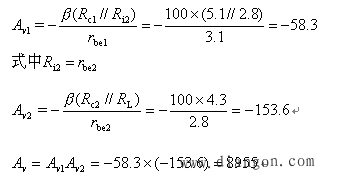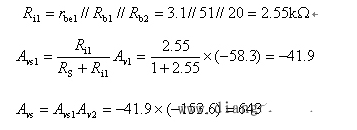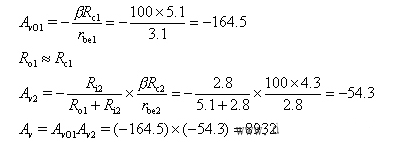There are two methods of processing when seeking the voltage amplification factor of the discrete component multistage amplifier circuit. First, the input resistance of the latter stage is taken as the load of the previous stage, that is, the input resistance of the second stage is connected in parallel with the first stage collector load resistance, which is referred to as the input resistance method. The second is to open the latter stage and the previous stage, calculate the open circuit voltage amplification factor and output resistance of the previous stage, and consider it as the internal resistance of the signal source, and jointly act on the input end of the latter stage, referred to as the open circuit voltage method. The two-stage amplifying circuit of Fig. 1 will now be described as an example. Figure 1 two-stage amplification circuit calculation The triode has β1=β2=β=100, VBE1=VBE2=0.7V, and the total voltage amplification is calculated. Calculated by the input resistance method and the open circuit voltage method, respectively. Solution (1) Using the input resistance method to find the voltage gain First calculate the input resistance of the triode Voltage gain If you want to calculate the voltage gain from VS (called the source voltage amplification factor), you need to calculate the input resistance. Open circuit voltage gain of the first stage Voltage amplification: Where: Uout--the amount of change in output current; Uin - the amount of change in the input current. Substituting data, The negative sign in the equation indicates that the phase difference between the output voltage and the input voltage is 180°. In the amplifying circuit, if only the magnification is required, the phase relationship can be ignored. Av=(1+β)Re//RL/[rbe+(1+β)Re//RL] Generally (1 + β) Re / / RL "rbe, so the voltage amplification factor of the common collector amplifier circuit is less than "1", but close to "1", so it is also called the emitter follower. Automotive Relay,Professional Four-Pin Relay,Micro Car Relay,Miniature Four-Pin Relay Relays Ningbo Xingchuangzhi Electric Appliance Co.,Ltd. , https://www.xingchuangzhi.com







Voltage amplification calculation of multi-stage amplifier circuit